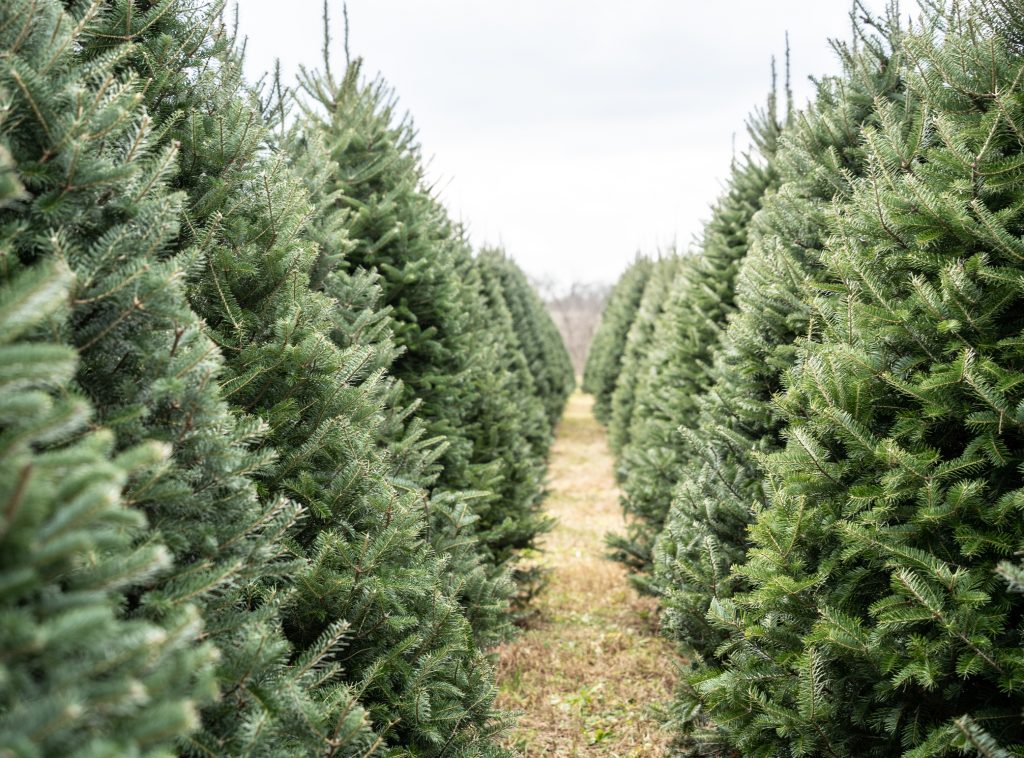Have a Very Texas Christmas
True to our outsize personality, Texas goes big for the holidays. Our parades? Extravagant. Trees? Towering. Light displays? Visible from space — no, really! (More on that below.) As you make your holiday plans, consider these opportunities to make the season bright, Texas-style.

Shop and Chop Your Own Tree
Make your tree hunt an experience the whole family will remember. Pick (and maybe even cut) a special spruce together at a local Christmas tree farm and enjoy a longer-lasting tree that fills your home with the scent of Christmas.

Glide Into the Season
Time to hit the ice. While frozen ponds are rare in Texas, we have some of the coolest ice-skating rinks in the U.S., including Houston’s Green Mountain Energy Ice, created every year with water from nearby Kinder Lake, and Fort Worth’s Panther Island Ice, located within the Coyote Drive-In.

Visit the Christmas Capital of Texas
Each December, Grapevine transforms into a living Christmas card. Shops along Main Street twinkle with lights, toys, and stocking-stuffer goodies. Catch performances near the Glockenspiel Clock Tower or ride the Grapevine Vintage Railroad, where passengers are treated to carols, cocoa, and cookies.

Visit a State Park
Texas Parks and Wildlife hosts indoor and outdoor holiday events statewide, from salt dough ornament making and old-fashioned candle dipping to light displays and star parties. Make it a weekend and stay at one of these unique winter getaways. Tip: Make a playlist of Texas Christmas tunes for your holiday travels.
Attend a Parade
Don’t miss giant inflatables, marching bands, stilt walkers, and, of course, Santa himself this year. From boat parades to downtown processions, Texas’ holiday parades turn up the volume of Christmas cheer. Bring a comfy chair, wear something sparkly, and don’t forget a thermos of cocoa.

Check Out a Dazzling Light Display
Texas beams at Christmastime with spectacular light displays, each with its own story. Wander through the 12 Days of Christmas at the Dallas Arboretum, see 3 million lights twinkling along the Concho River, or visit Santa’s Wonderland in College Station, where kids can slide down snowbanks (courtesy of snow machines).

See Your Favorite Holiday Flick
Bundle up for a drive-in movie and let nostalgia take the wheel. Most drive-in movie theaters spin up Christmas classics, such as “Home Alone,” “The Grinch,” and “It’s a Wonderful Life,” for the holidays. You and the family can quote along in the car to your heart’s content.

Make It a Small-Town Christmas
Small towns bring big charm — and a chance to slow down — to the holiday season. In Jefferson, stroll through more than 100 decorated Christmas trees in the Enchanted Forest at Lions Park. In Fredericksburg, snap a family photo in front of the 26-foot Weihnachtspyramide. Or visit Johnson City’s 2-million-light display that’s reportedly visible from space.

Say Hello to Santa
Meet the big man in a big way. At Sweet Eats Adventure Farm in Georgetown, children can enjoy breakfast with Santa. At Galleria Dallas, they board a train to Santa’s lodge tucked inside a moonlit forest, where he greets each child by name.

Shop Local
Skip the big box hustle and find gifts with heart. Explore locally owned boutiques selling handicrafts and curiosities for everyone on your list, from whimsical letterpress cards, to heirloom cast-iron cookware, and even baby’s first cowboy boots.

Have a Victorian Christmas
Step into “A Christmas Carol” at Galveston’s Dickens on The Strand. Expect to see all the essentials of a Victorian Christmas: hoop skirts, top hats, and even pirates parading down the cobblestone streets. Climb aboard the 1877 Tall Ship ELISSA for tea and cookies, then gather for Pickwick’s Lanternlight Parade and the ship’s traditional cannon firing.

Volunteer Together
Give your family the best gift of all: the joy of giving back. Volunteering as a family at a food bank, book drive, or nursing home teaches kids lessons on gratitude and compassion that last well beyond the season.
Before you head out on the road, get a refresher on winter road safety.
